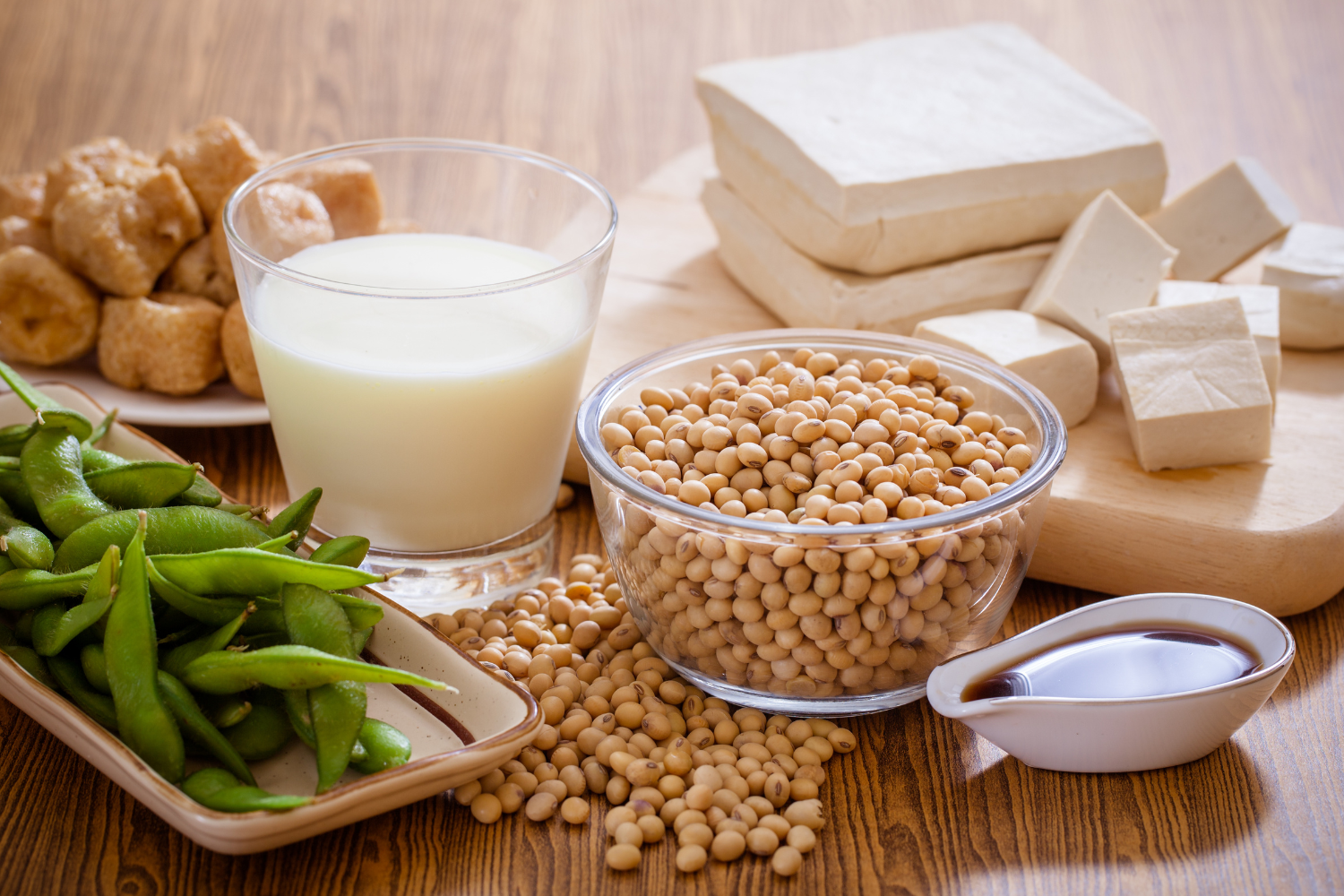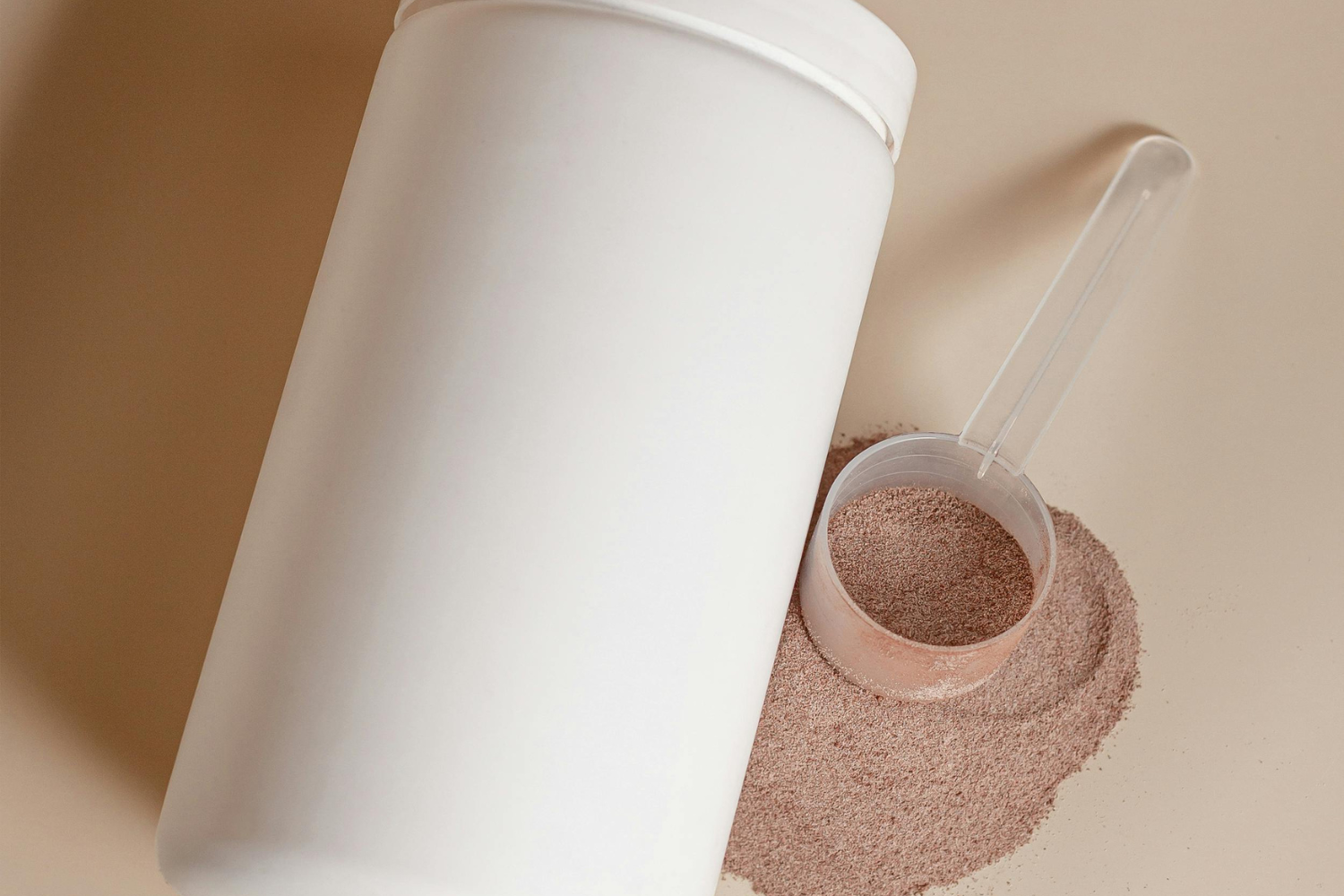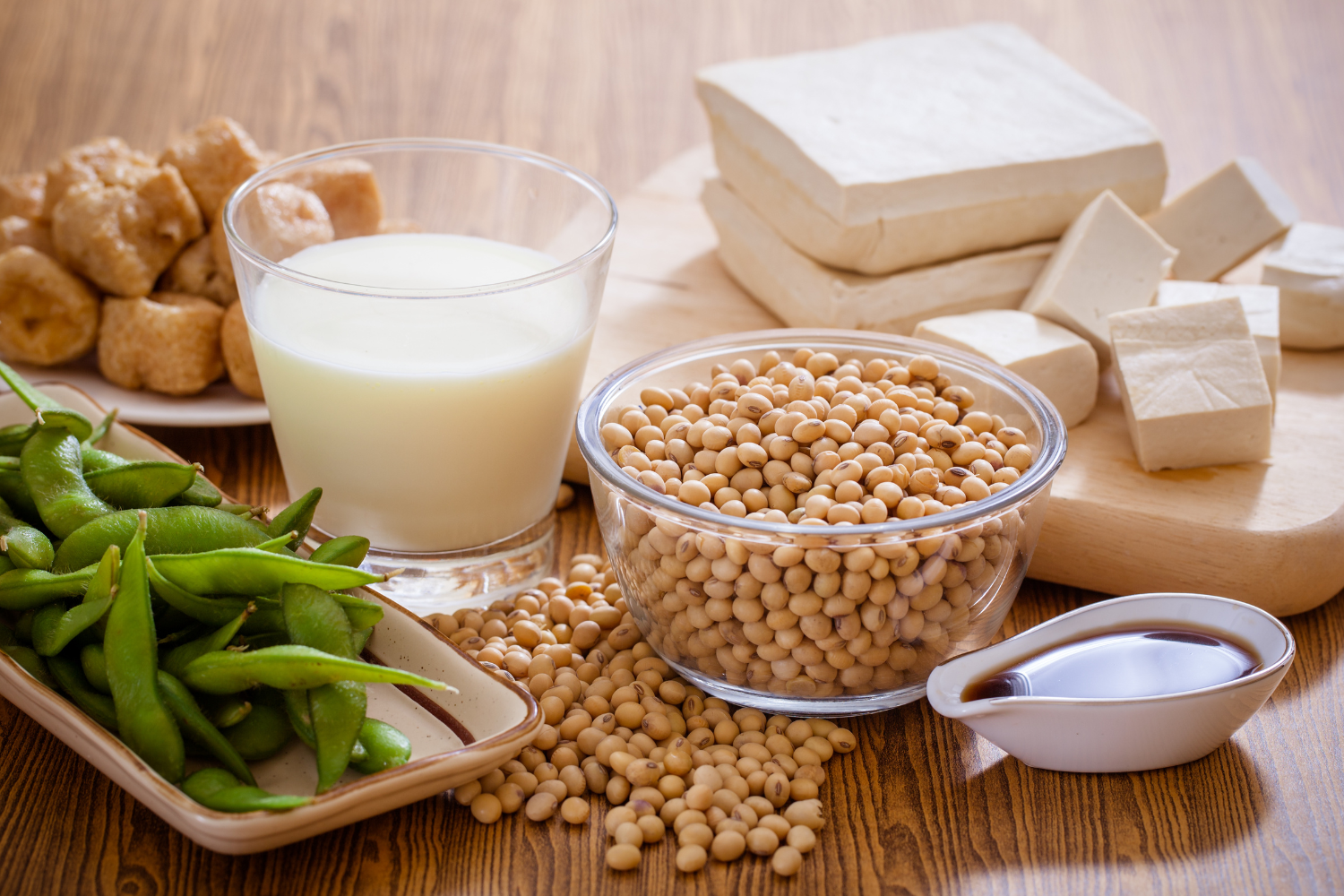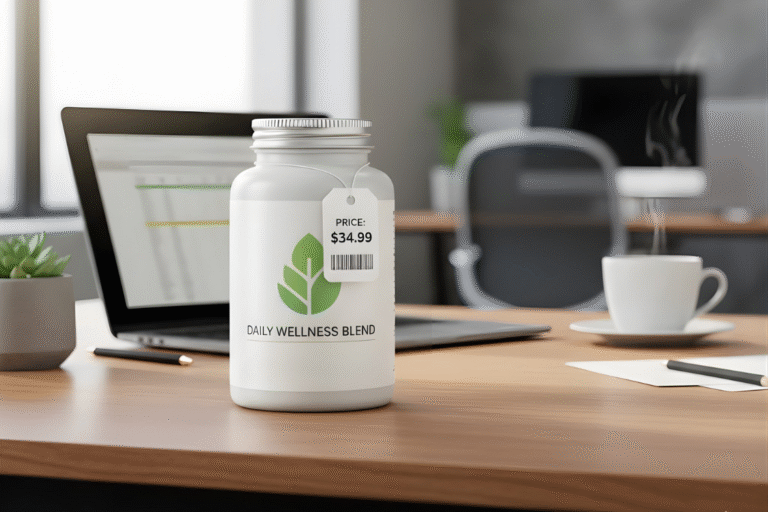Choosing the right protein source is vital for any supplement brand to meet growing consumer demand across diverse markets—from athletes seeking muscle gain to health-conscious individuals focused on a higher protein diet. With increased attention to dietary protein, essential amino acids, and complete protein sources, brands must evaluate options like whey protein, plant-based protein powders, and other high-quality protein ingredients to align with customer needs.
This guide outlines the best protein sources for supplements, compares animal-based proteins with plant-based foods, and explores how factors like amino acid profile, protein content, and digestibility impact product development, shelf appeal, and long-term brand growth.
Key Factors to Consider When Choosing a Protein Source
Selecting the right protein for your supplement brand depends on your product’s purpose and the customers you want to reach. From protein quality and digestibility to sourcing and manufacturing, each factor plays a role in your final formula.
Target Audience
Your protein source should align with your customer’s specific needs and lifestyles. Different groups have different goals and dietary restrictions, so matching your ingredients to these needs can improve brand trust and sales.
Target Market Considerations:
- Athletes: Require high protein intake to support muscle mass, tissue formation, and recovery. Look for protein powders high in essential amino acids and branched-chain amino acids (BCAAs), such as whey protein or a complete plant-based protein.
- Vegans: Need plant-based protein powders like pea, hemp, or soy products that offer complete or complementary amino acid profiles.
- Weight Management: Consumers focused on weight loss or weight gain look for lean protein options with healthy fats and high satiety. Casein and plant proteins with fiber are popular choices.
- General Wellness: This group seeks balanced protein sources with a nutrient profile that contributes to general wellness and fits into a balanced, healthy diet.

Protein Quality & Amino Acid Profile
The effectiveness of a protein supplement depends on its amino acid content and how well it supports muscle growth and repair. A complete protein provides all nine essential amino acids in the right amounts, while incomplete proteins lack one or more.
Protein Comparison Table:
| Protein Type | Complete Protein | Contains All Nine Essential Amino Acids | Ideal For |
|---|---|---|---|
| Whey | Yes | Yes | Muscle gain, recovery |
| Casein | Yes | Yes | Overnight recovery, satiety |
| Pea | No* | High, often combined with rice | Vegan, muscle support |
| Hemp | No | Good, not complete | Digestibility, general health |
| Brown Rice | No | Lacks lysine | Vegan blends |
| Soy | Yes | Yes | Vegan, complete protein source |
| Collagen | No | Lacks several essential amino acids | Skin, joints, hair support |
*Pea and brown rice protein are commonly blended to complement each other’s amino acid profiles and help meet the requirements of a complete protein.
Digestibility & Allergen Concerns
Digestibility affects how much protein the body can absorb and use. Animal protein like whey and casein offer high bioavailability but may cause issues for people who are lactose intolerant. Plant protein options like pea, hemp, and rice are gentler on digestion and are hypoallergenic. Soy protein, while complete, may be avoided due to soy allergies or sensitivity to isoflavones. These concerns are essential for brands targeting customers with dietary restrictions or sensitive stomachs.
Sustainability & Sourcing
Sustainable protein sourcing is a growing priority for health-conscious consumers and environmentally focused brands. Plant-based protein powders from hemp, pea, and rice are considered more eco-friendly due to lower water use and reduced greenhouse gas emissions. Ethical sourcing of animal protein, such as grass-fed whey or marine collagen, also supports responsible production. Transparent sourcing builds trust and aligns your supplement brand with clean label values.
Cost & Manufacturing Considerations
Manufacturing costs vary depending on the type of protein, processing requirements, and sourcing availability. Brands must consider how each choice impacts profit margins, scalability, and product shelf stability.
Cost Considerations:
- Affordability: Whey protein concentrate is often more cost-effective than isolate or specialty proteins like collagen.
- Bulk Sourcing: Plant proteins such as pea and soy are widely available and cost-efficient for large-scale production.
- Processing Methods: More refined proteins like whey isolate or hydrolyzed collagen may involve higher costs due to extra filtration or enzymatic processing.
Types of Protein Sources for Supplements
Each protein type offers unique benefits for different use cases, from athletic performance to overall health. Choosing the right combination ensures your supplement delivers value and results.
Whey Protein
Whey protein is a fast-digesting animal protein derived from dairy. It’s rich in branched-chain amino acids (BCAAs), which help support muscle growth, tissue repair, and recovery. Whey protein is widely used in sports nutrition due to its fast absorption and complete amino acid content.
Pros:
- High bioavailability and protein content
- Contains all nine essential amino acids
- Ideal for post-workout muscle recovery
Cons:
- Not suitable for a vegan diet
- May cause issues for lactose-intolerant individuals
Casein Protein
Casein is another milk-based protein that digests much more slowly than whey. It digests slowly, which makes it a common choice for overnight use or between meals in high-protein diets.
Pros:
- Complete protein with long-lasting satiety
- Supports muscle repair over extended periods
Cons:
- Dairy-based and unsuitable for lactose-sensitive consumers
- Slower absorption may not suit post-workout needs
Pea Protein
Pea protein is a plant-based protein made from yellow split peas. It contains a good amount of arginine, a non-essential amino acid that plays a role in circulation and muscle metabolism. It’s often blended with other proteins to ensure a complete amino acid profile.
Pros:
- Hypoallergenic and easy to digest
- Suitable for vegan and allergen-free diets
- Sustainable and widely available
Cons:
- Slightly low in methionine
- May require blending for full amino acid coverage
Hemp Protein
Hemp protein is derived from hemp seeds and is known for containing healthy fats, fiber, and other nutrients. It offers a more natural, minimally processed option, contributing to a balanced diet.
Pros:
- High in omega-3s and fiber
- Eco-friendly and nutrient-rich
- Easy to digest for most individuals
Cons:
- Lower protein per serving compared to whey or pea
- Incomplete protein, missing some essential amino acids
Brown Rice Protein
Brown rice protein is a plant-based option often used in vegan formulas. It’s easy on the stomach and works well when paired with other proteins to form a complete amino acid profile.
Pros:
- Hypoallergenic and suitable for sensitive diets
- Vegan-friendly and easy to blend
Cons:
- Low in lysine
- Texture may feel grainy in some formulations
Soy Protein
Soy protein is one of the few complete plant proteins, offering all nine essential amino acids. It’s a popular option in vegan supplements and is often used in both food and powder form.
Pros:
- High protein quality and complete amino acid profile
- Cost-effective and versatile in supplements
Cons:
- Common allergen
- Contains isoflavones, which are naturally occurring compounds that some consumers choose to avoid in hormone-sensitive diet
Collagen Protein
Collagen is rich in glycine, proline, and hydroxyproline, which are structural amino acids found in connective tissues like skin and joints. It’s not a complete protein but is rich in specific amino acids like glycine and proline.
Pros:
- Supports skin, joint, and connective tissue health
- Easily dissolves in hot or cold liquids
Cons:
- Incomplete protein
- Animal-based only, not suitable for vegan diets

How to Choose the Best Protein for Your Supplement Brand
Choosing the best protein source for your supplement brand depends on more than just protein content. You must consider your audience, brand values, and your product’s performance in the real world. Making the right decision can help your brand stand out and meet customer expectations.
Identify Your Brand’s Niche
Start by clearly defining your niche. A fitness-focused brand may need high protein powders like whey protein concentrate to support muscle growth and recovery. Wellness brands may prioritize complete protein sources with added nutrients to support overall health and immune function. A vegan or plant-based brand should focus on plant-based protein powders like pea, hemp, and soy products. Keto-focused brands might look for protein sources with healthy fats and low carbs, such as collagen or hemp.
Consider Protein Blends
Some protein sources don’t contain all nine essential amino acids, so combining them can create a complete protein profile. Many plant-based protein powders like brown rice and peas work well to provide a balanced amino acid mix. Using protein blends can help improve protein quality while keeping your product suitable for vegan or allergy-sensitive markets.
Check for Certifications
Consumers pay attention to product labels and certifications, which can help build trust. Look for protein sources that are non-GMO, organic, or grass-fed. Third-party testing adds another layer of quality assurance, making your supplements more appealing to customers concerned with safety, dietary protein quality, and transparency.
Flavor & Texture Matters
The best protein sources for supplements still need to taste good. A protein powder that’s high in protein but mixes poorly or tastes gritty can turn customers away. Test each source for texture, flavor, and mixability before launching. Some protein types, like brown rice or hemp, may need masking flavors or added ingredients to improve the final product.
Common Mistakes to Avoid
Even with high-quality protein, some mistakes can prevent your supplement from succeeding in the market. Avoiding these issues can save you time, money, and customer frustration.
Choosing a Protein Without Considering Your Target Market
Each source of protein serves different needs. Using animal protein like whey in a vegan-focused product or choosing plant protein without adjusting for amino acid balance can confuse or disappoint customers. Match your protein type with your audience’s dietary needs and goals, such as muscle gain, weight loss, or general wellness.
Ignoring Digestibility and Potential Allergens
Some consumers have dietary restrictions that impact how much protein they can tolerate. Lactose-intolerant users may struggle with whey or casein. Soy allergies can be common, and some plant-based protein powders may cause bloating. Testing for common allergens and offering alternatives helps you reach a wider audience.
Overlooking Sourcing and Sustainability Concerns
Sustainability and sourcing are major factors in consumer buying decisions. Many plant-based protein sources like hemp and pea are considered more sustainable due to their lower environmental impact. They align well with brands focused on clean eating and eco-conscious practices. Poor sourcing can also affect product quality and long-term reliability.
Not Testing Flavor and Texture Before Launching
Even a healthy protein powder with essential nutrients and a complete protein source must taste good. Poor texture or bad flavor can lead to low repeat sales. Always test multiple versions to ensure your product delivers a good user experience, especially for plant protein options that can taste earthy or grainy.
Where to Source High-Quality Protein for Your Supplement Brand
Sourcing the right protein is just as important as choosing the type. Reliable suppliers and solid manufacturing partners ensure consistency, safety, and compliance in your final product.
Finding Reputable Suppliers and Manufacturers
Work with protein suppliers with experience producing protein supplements for B2B brands. Look for partners who can supply high protein, low saturated fat ingredients that meet your brand’s standards for safety and labeling. Platforms like Inventory Ready help connect brands to trusted manufacturers specializing in whey protein, plant-based protein powders, and other high-quality protein ingredients.
Understanding Bulk Pricing and Contract Manufacturing
Buying in bulk helps lower costs, but it’s important to understand minimum order quantities, shipping times, and storage needs. Contract manufacturers can help manage production and labeling while offering access to more complex processing methods, such as creating protein blends or flavored formulas. This is useful for brands aiming to support specific outcomes like muscle mass, tissue formation, or weight management.
Testing and Quality Control Before Full-Scale Production
Always test your protein supplements before full production. Check for protein content, amino acids, flavor, and mixability. Quality control ensures each batch meets standards for safety and performance. Third-party testing and certifications can support claims related to protein per serving, essential amino acids, or dietary compliance, helping you stay competitive and compliant.

Choosing the Right Protein Source to Grow Your Supplement Brand
Every protein source comes with unique strengths, from the fast-absorbing benefits of whey to the plant-based appeal of pea, hemp, and brown rice proteins. Each one offers different levels of protein content, essential nutrients, and digestibility. Making the best choice for your brand starts with understanding your niche and your customers’ dietary needs.
Once you’ve selected the ideal protein type, focus on finding trusted suppliers, testing your product for quality and flavor, and positioning your supplement clearly in the market. This approach helps ensure your protein supplement stands out in a growing, competitive industry.
Frequently Asked Questions
What are the best protein sources for supplements?
Whey, casein, soy, pea, hemp, and brown rice are among the best protein sources for supplements, depending on the brand’s target audience and dietary needs.
Which protein is best for muscle growth?
Whey protein is often preferred for muscle growth due to its high protein content, fast absorption, and complete amino acid profile.
Are plant-based protein powders effective?
Yes, plant-based protein powders like pea and soy can be highly effective, especially when combined to provide all nine essential amino acids.
How much protein should a supplement contain per serving?
Most protein supplements contain 15–30 grams of protein per serving, depending on the product’s purpose and the target consumer’s body weight and goals.
What should I look for in a protein supplement supplier?
Look for suppliers with experience in dietary protein production, reliable sourcing, third-party testing, and the ability to scale with your brand.
References
- National Institutes of Health. (2023). Lactose Intolerance. https://www.niddk.nih.gov/health-information/digestive-diseases/lactose-intolerance
- National Research Council (US) Subcommittee on the Tenth Edition of the Recommended Dietary Allowances. Recommended Dietary Allowances: 10th Edition. Washington (DC): National Academies Press (US); 1989. 6, Protein and Amino Acids. Available from: https://www.ncbi.nlm.nih.gov/books/NBK234922/
- Neinast, M., Murashige, D., & Arany, Z. (2019). Branched Chain Amino Acids. Annual review of physiology, 81, 139–164. https://doi.org/10.1146/annurev-physiol-020518-114455
- U.S. Department of Agriculture. (2020). 2020-2025 Dietary Guidelines and Online Materials. https://www.dietaryguidelines.gov/resources/2020-2025-dietary-guidelines-online-materials
- U.S. Environmental Protection Agency. (2025). Sources of Greenhouse Gas Emissions. https://www.epa.gov/ghgemissions/sources-greenhouse-gas-emissions
- U.S. Food and Drug Administration. (2023). Color Additives in Foods. https://www.fda.gov/food/color-additives-information-consumers/color-additives-foods
- U.S. Food and Drug Administration. (2024). Current Good Manufacturing Practices (CGMPs) for Food and Dietary Supplements. https://www.fda.gov/food/guidance-regulation-food-and-dietary-supplements/current-good-manufacturing-practices-cgmps-food-and-dietary-supplements
- U.S. Food and Drug Administration. (2025). Food Allergies. https://www.fda.gov/food/nutrition-food-labeling-and-critical-foods/food-allergies
- U.S. Food and Drug Administration. (2025). Guidance for Industry: Food Labeling Guide. https://www.fda.gov/regulatory-information/search-fda-guidance-documents/guidance-industry-food-labeling-guide




